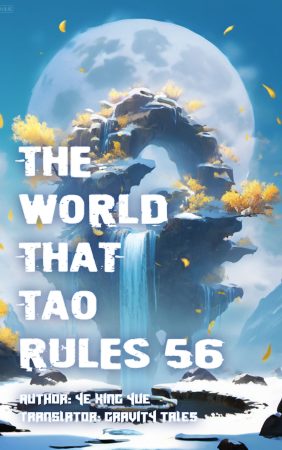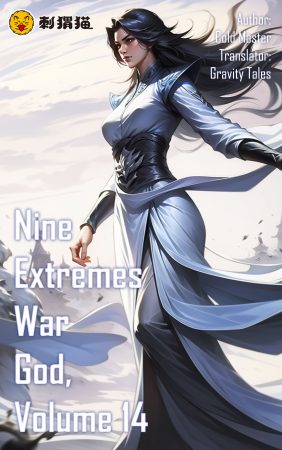Chapter 124
Our Discord Server: https://discord.gg/PazjBDkTmW
You can buy coins here to unlock advanced chapters: https://gravitytales.com/coins-purchase-page/
Chapter 124: The Fighter Jet That Only Exists in Legend
“Uncle Yan, you are truly amazing!” Lin Mo gazed longingly at the collection, taking a moment to gather himself, almost wishing he could pack it all up and take it with him.
“Not amazing, not amazing. I make my living with this. It is both my job and my passion. Back when I was working on the J-10, I literally took apart several foreign fighter jets to the last screw and rivet for reference. I used supercomputers to calculate aerodynamic layouts. When the Galaxy Giant Aircraft first came out, I spent a lot of time doing that job, calculating the costs of electronic devices. Many people would go days and nights without sleep, living and eating at the hangar, using up countless sheets of drawing paper during that time,” Uncle Yan recalled those days with shimmering eyes, shaking his head. “It wasn’t easy; with so many models, we only ended up choosing one or two. I don’t know how many great designs are just sitting in storage—not because they were bad, but because we couldn’t produce them.”
“Uncle Yan, can I see those discarded designs?” Lin Mo asked eagerly, as examining these advanced models was his main objective for the visit.
“Well, ordinary folks aren’t allowed to see them. However, your level of security clearance should be sufficient. Come on, let me show you the fruits of my life’s work. Of course, it’s not everything I have; what I can show you is only semi-public. The actual secrets were all turned in when I retired; I didn’t keep a single drawing.”
Uncle Yan also recognized Lin Mo’s identity from the conversation he had overheard with Chen Haiqing, who was wearing a pressure suit. Generally speaking, even if such drawings were leaked, they wouldn’t be useful, as they were outdated models from over a decade ago. They held no analytical or manufacturing value, and the secrecy was mostly to prevent show-offs from bragging about them and causing negative impacts.
Uncle Yan’s collection was well-preserved, with not a speck of dust in sight. It opened Lin Mo’s eyes to secret models that had never been publicly revealed.
“Come, help me move these books. This is my treasure!” Uncle Yan pulled out several thick volumes, each nearly half a square meter in size, with handmade covers crafted from cardboard, and the pages bound with thick paper—entirely manually created atlases.
The books were evidently heavy, each weighing nearly twenty pounds. Lin Mo helped Uncle Yan place them on the dining table, filling the entire surface.
Uncle Yan opened a thick book labeled with “Second Generation Fighter Jet” on the cover and pointed to the diagrams on the first few pages, saying, “See this? This is the second-generation model, on par with the J-8, called JT-805 and JT-809. The ‘T’ stands for test. The first ‘8’ indicates improvements over the current J-8 models. We continued the modifications from the MiG aircraft. Nowadays, people will certainly say we, the older generation, are conservative and only copy Soviet designs. But at that time, our aviation industry was utterly lacking; we had nothing. The Soviet Union was the only one willing to support us with aircraft and technology. We wanted to learn from the West, but they had a technology blockade. We had to rely on those who returned from studying abroad to lead us, to experiment bit by bit, sometimes even risking lives for the data. During those times, the country was poor and facing famine; we couldn’t afford to fund everything. During test flights, researchers often starved themselves to save food for the test pilots—otherwise, the pilots wouldn’t have the strength to fly. Do you know that when we were developing the atomic bomb, it consumed nearly one-third of China’s military budget each year? Then there were fleets, heavy and light weapons, individual equipment, and various electronic devices. Every research institute was desperate, competing for limited experimental funding, leaving even less for our aircraft design. During the self-defense counterattack, we barely had any decent fighter jets available to engage. All we had were some old planes that had participated in the Korean War, and they were always falling out of the sky.”
Uncle Yan revealed a bit of history, sharing the hardships of those times that still left a mark on him today.
“Of course, the versions of the J-10 that have already been put into use aren’t included in what I’m showing you. I believe you already know that. Let’s take a look at the third generation, which is on par with the J-10.” With Uncle Yan’s expertise in aircraft design, Lin Mo carefully examined each detailed drawing that made the complicated information easy to digest. Each diagram represented countless hours of hard work and dedication.
“The third generation is the most practical design. Essentially, we didn’t completely copy the Russians. At that time, our conditions had improved significantly. We had more materials and funding to invest in our own designs. Many applications came from the technical reserves we built up during difficult times. Now, many components on our aircraft can be produced domestically, but engines will take a few more years to develop. Look at this—JT-1015, a swept-wing variable geometry. It referenced the F-14 Tomcat’s semi-swept wing design, and the airframe was made of stainless steel. However, we ultimately abandoned it due to stability issues when loaded. There’s also the JT-1055, designed for short takeoff and landing on aircraft carriers, which could adapt to a 200-meter takeoff distance but might still require steam catapult assistance. Haha, these are just sketches; more important diagrams aren’t allowed to leave the premises due to confidentiality. These are merely doodles I came up with after retirement.”
Uncle Yan proudly flipped through a few more books, stating, “These few books contain some real treasures. The domestic research on the fourth-generation fighter jet is still in the detail refinement stage. I couldn’t bring many valuable diagrams with me when I retired, so what I have here are not so important sketches of experimental models I imagined after retiring. The last few books are on the fifth-generation fighter jets, the sixth-generation near-space combat aircraft, and the seventh-generation space combat aircraft. However, none of these have been validated through actual wind tunnel testing.”
Discovering such treasures made Lin Mo impatiently flip through the pages. The designs were increasingly astounding, and military enthusiasts would never encounter such true fighter jet designs on the market.
The fifth-generation JT-32 “Infiltrator” clearly departed from the design philosophy of the fourth-generation J-20. The requirements for pilots’ physical qualities had escalated, achieving speeds of up to three times the speed of sound, incorporating a concept for a core overload cockpit design. The sixth-generation JT-27 “Aurora,” JT-30 “White Tiger,” and JT-33 “Dragon King” featured design concepts for transformable aircraft. Besides the “Fire Dragon” currently in development, what Uncle Yan showed was still just paper sketches, mainly textual descriptions of airframe strength, dynamics, performance parameters, and electronic designs. However, it was evident that the design philosophy of transformable aircraft began to emerge with the sixth generation.
Stealth features started becoming basic equipment from the fourth-generation fighter jets onwards, with low detection, high speed, high maneuverability, high operational range, and high survival rates allowing fighter jets to redefine their roles. They must possess the capability to return wounded and engage in multi-target combat at any time.
The seventh-generation science fiction-style S-10 “Sky Dragon” space strike aircraft completely discarded the concept of atmospheric fighter jets, integrating interception, bombing, and stealth reconnaissance, featuring significant altitude and range capabilities, along with greatly enhanced defenses. It also introduced concepts for a separable, insertable safety-protection cockpit, hinting at a prototype for a space carrier and orbital spaceport design, which may take decades for the seventh-generation fighters to take shape.
Uncle Yan’s collection didn’t just include fighter jets; there were also numerous designs for helicopters, bombers, and unconventional flying vehicles. These were ideas he had accumulated over time. Designers don’t just limit themselves to fighter jet designs; sometimes, a few special derivative ideas emerge that are simply too good to discard, so he preserved them.
Many of the drawings were still just figments of imagination in his mind, but with professional designers providing simulation data for them, those unfamiliar with the designs might even think they were real.
“These are truly amazing!” Lin Mo adjusted the resolution on his DSLR camera to the highest setting. He couldn’t help but admire this Canon “Invincible Rabbit," created by the gold giant dragon. The different refractive indices of the transparent metal caused significant structural variations from the original, but the imaging quality remained the same.
The living room was filled with the bright, continuous flashes of a flashless light, capturing high-definition photos that would later be sorted and categorized by the gold giant dragon.
As Uncle Yan assisted Lin Mo in taking pictures, he smiled and said, “Little Lin, would you be interested in becoming an aircraft designer? If you’re interested, I can teach you!”
Being able to fly planes and design them too—what a perfect combination! Uncle Yan thought this was an excellent idea, and he couldn’t help but express it.
Lin Mo hesitated for a moment, tilting his head and considering before saying helplessly, “Well, I’m a fighter pilot now, so I guess I can’t do that. I worry I won’t be able to sit still, and the complex calculations make me a bit dizzy.”
“Designing aircraft isn’t that hard; I’ve never found it difficult! As long as I have enough materials to experiment with, I don’t get bored. Just think, others flying the planes you design! Isn’t it the same as flying them yourself? Little Lin, how would you know if you don’t try? I’m a professor, and people usually beg me to teach them; I don’t even want to!”
Due to the confidentiality principles at work, Uncle Yan had to keep his original job a secret and couldn’t freely speak about it. With his aging body and declining health, he was unable to return to his former position. He had long suppressed a great deal of frustration. Finally, coming across a pilot with sufficient security clearance who could discuss non-top-secret matters felt like having been deaf and dumb for years, suddenly having the opportunity to speak freely. Uncle Yan felt a sense of relief he had never experienced before.












